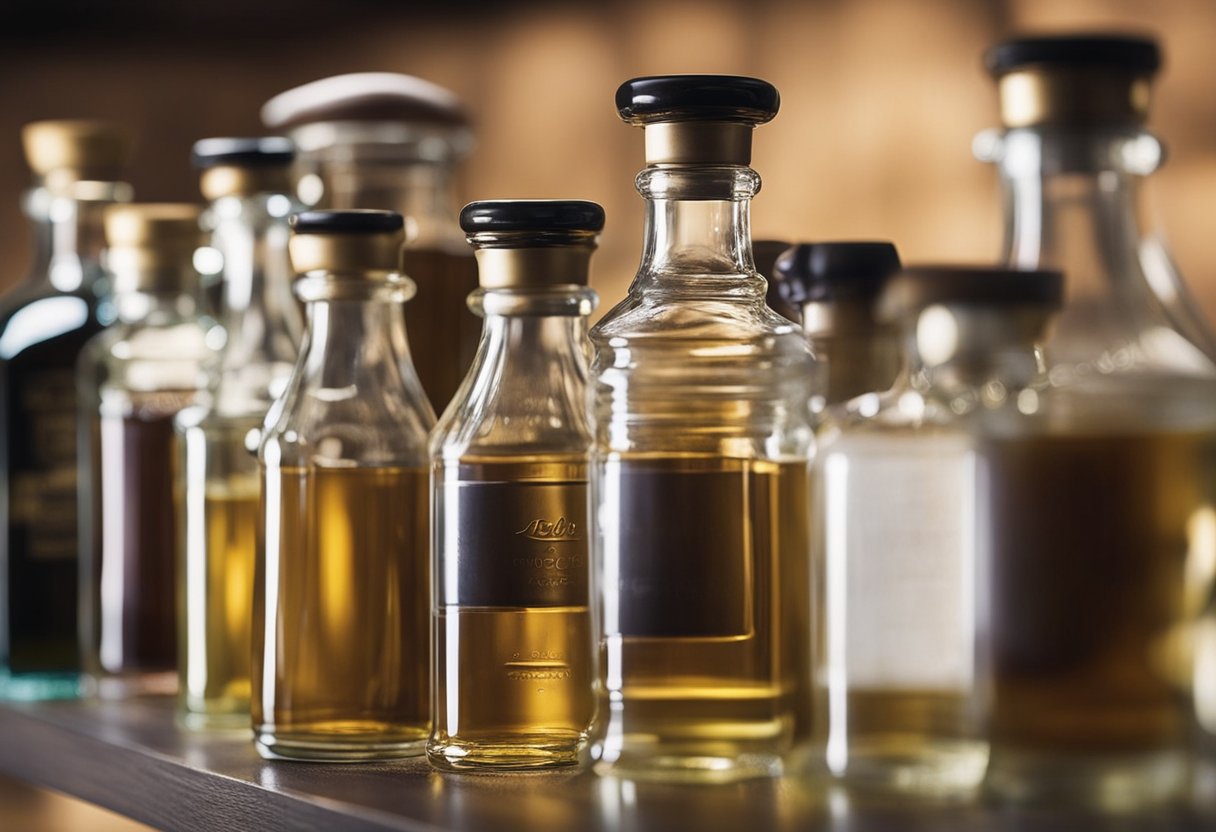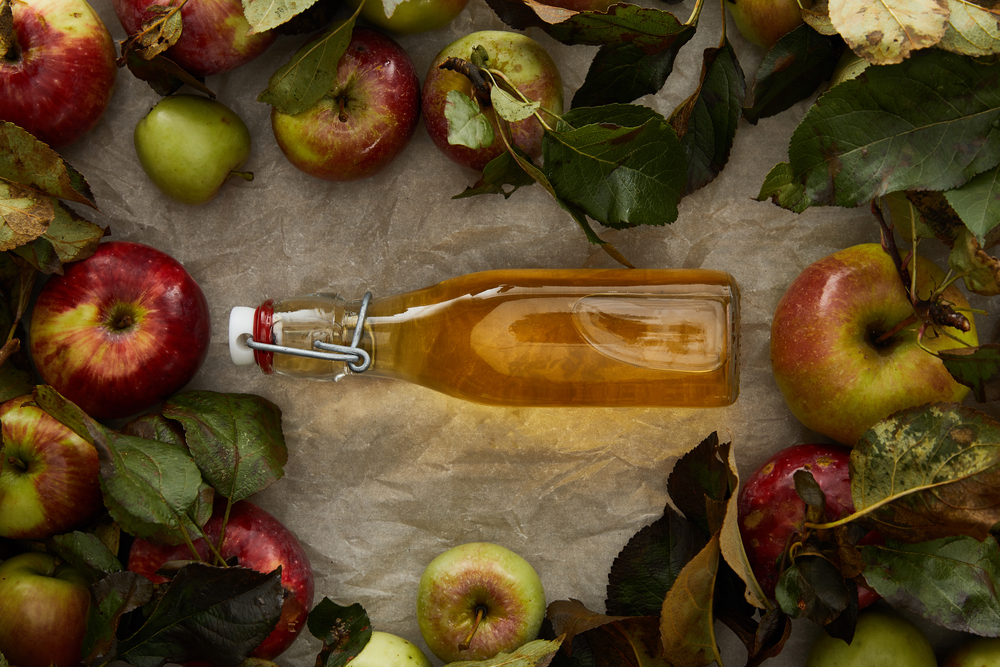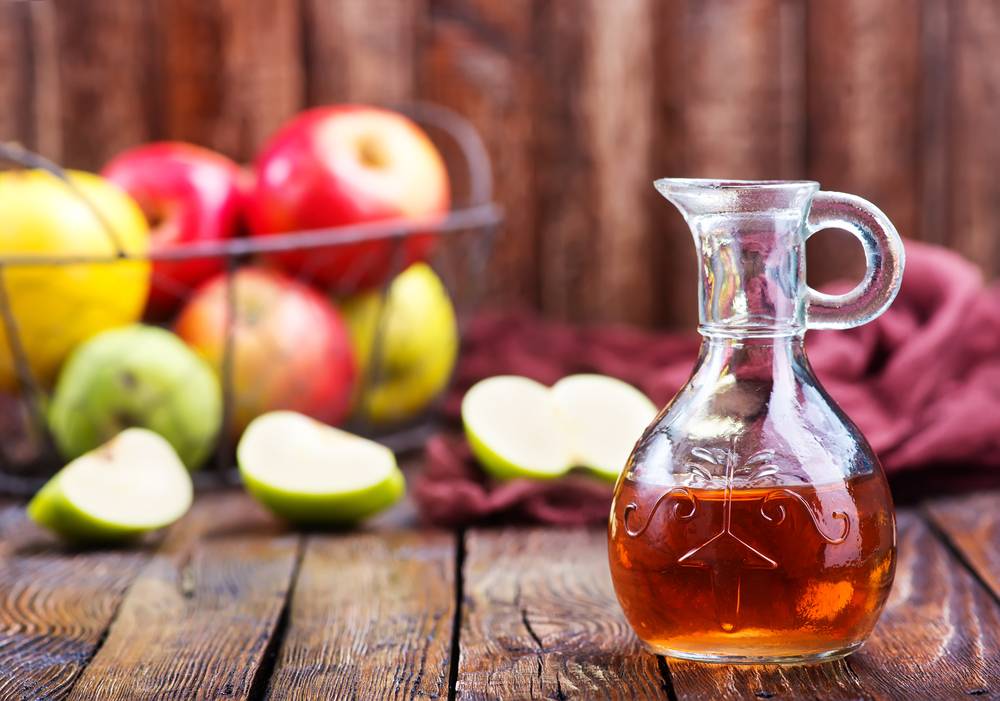Vinegar is a common ingredient in many dishes, but have you ever wondered what it tastes like? Vinegar is a sour, acidic, and tangy liquid that can add a unique flavor to your food.
Depending on the type of vinegar, it can also have a slightly sweet or fruity taste. For example, apple cider vinegar has a slightly sweet taste that is reminiscent of apples, while balsamic vinegar has a complex flavor that is both sweet and tart.

Understanding the taste of vinegar is important for cooking and food preparation. Vinegar can be used in a variety of ways, from salad dressings to marinades and sauces.
It is also a popular ingredient in pickling and canning. The taste of vinegar can vary depending on the type of vinegar and its uses, so it’s important to understand the different types and their flavor profiles.
Key Takeaways
- Vinegar is a sour, acidic, and tangy liquid that can add a unique flavor to your food.
- Different types of vinegar have different flavor profiles, with some being sweet or fruity in taste.
- Understanding the taste of vinegar is important for cooking and food preparation, as it can be used in a variety of ways.
Understanding the Taste of Vinegar
As someone who has tasted vinegar before, I can confidently say that vinegar has a unique taste that can be described as sour, tangy, and acidic. Depending on the type of vinegar, it can also have a slightly sweet or fruity taste.
For example, apple cider vinegar has a slightly sweet taste that is reminiscent of apples, while balsamic vinegar has a complex flavor that is both sweet and tart. White wine vinegar tends to be a bit lighter and more delicate in flavor, which means it won’t pair as well with big ingredients like red meat.
Vinegar is made through a process of fermentation, which gives it its sour and acidic taste. During the fermentation process, yeast and bacteria convert the natural sugars in fruits or grains into alcohol, which is then further fermented into acetic acid. This acetic acid is what gives vinegar its distinctive taste.
It’s important to note that different types of vinegar have different flavor profiles, which can be used to enhance the taste of various dishes.
For example, rice vinegar is commonly used in Asian cuisine and has a milder taste compared to other types of vinegar. On the other hand, malt vinegar has a strong, distinctive flavor that is often used in British cuisine.
Overall, the taste of vinegar can be an acquired taste for some people, but it is a versatile ingredient that can add a unique flavor to a variety of dishes.
Types of Vinegar and Their Taste Profiles
As a vinegar lover, I have tasted many types of vinegar and their unique flavors. Vinegar is a sour-tasting liquid that is commonly used in cooking, pickling, and as a condiment. Here are some of the most popular types of vinegar and their taste profiles.
Wine Vinegar
Wine vinegar is made from different types of wines such as red, white, or Champagne. Red wine vinegar tends to be punchier, with a more vibrant grape flavor profile. White wine vinegar is milder and less acidic than red wine vinegar, with a light and fruity taste.
Champagne vinegar is light and crisp, with a delicate flavor that complements salads and seafood dishes.
Apple Cider Vinegar
Apple cider vinegar has a fruity, tangy flavor with a hint of sweetness. It is made from fermented apple juice and is commonly used in salad dressings, marinades, and sauces. Apple cider vinegar is also believed to have many health benefits, including reducing inflammation and aiding digestion.
Balsamic Vinegar
Balsamic vinegar has a sweet and sour taste with a syrupy texture. It is made from grapes that are cooked down and aged in wooden barrels for several years.
The longer the aging process, the more complex the flavor profile becomes. Balsamic vinegar is commonly used in salad dressings, marinades, and as a drizzle over roasted vegetables or fruits.
Rice Vinegar
Rice vinegar is made from fermented rice and has a mild, slightly sweet flavor. It is commonly used in Asian cuisine, particularly in sushi rice and pickling.
There are different types of rice vinegar such as black rice vinegar, red rice vinegar, and brown rice vinegar, each with a distinct flavor profile.
White Vinegar
White vinegar is the most common type of vinegar, with a sharp and potent taste. It is made from grain and is commonly used in pickling, cleaning, and as a condiment. White vinegar is also used in cooking to add acidity and flavor to dishes.
Malt Vinegar
Malt vinegar has a strong, rich flavor with a hint of sweetness. It is made from malted barley and is commonly used in British cuisine, particularly in fish and chips. Malt vinegar is also used as a condiment for meats and vegetables.
Champagne Vinegar
Champagne vinegar is light and crisp, with a delicate flavor that complements salads and seafood dishes. It is made from Champagne and has a mild, slightly sweet taste.
Sherry Vinegar
Sherry vinegar has a rich, complex flavor with a hint of sweetness. It is made from sherry and is commonly used in Spanish cuisine, particularly in sauces and marinades. Sherry vinegar is also used as a condiment for meats and vegetables.
Red and White Wine Vinegar
Red and white wine vinegar are made from red and white wines, respectively. Red wine vinegar has a more robust flavor than white wine vinegar, with a fruity and tangy taste. White wine vinegar is milder and less acidic, with a light and fruity taste.
Black and Red Rice Vinegar
Black and red rice vinegar are made from fermented black or red rice. Black rice vinegar has a deep, smoky flavor with a hint of sweetness. Red rice vinegar has a mild, slightly sweet taste with a hint of fruitiness.
In conclusion, vinegar comes in many types and flavors, each with its unique taste profile. From the fruity taste of apple cider vinegar to the rich and complex flavor of sherry vinegar, there is a vinegar for every taste preference.
Vinegar in Cooking
Vinegar is a versatile ingredient that can be used in various ways in cooking. Here are some of the common ways to use vinegar in cooking:
Dressing and Marinades
Vinegar is a key ingredient in making dressings and marinades. It adds a tangy and acidic flavor to the dish.
For dressings, vinegar is often mixed with oil and other seasonings to create a tasty and healthy dressing for salads and other dishes. Some popular types of vinegar for dressings are balsamic, red wine, and apple cider vinegar.
When it comes to marinades, vinegar is used to tenderize the meat and add flavor. It is often mixed with oil, herbs, and spices to create a flavorful marinade. Vinegar can also be used as a substitute for lemon juice in marinades.
Pickling and Sauces
Vinegar is an essential ingredient in pickling. It creates an acidic environment that helps preserve the food and gives it a tangy flavor. Different types of vinegar can be used for pickling, such as white vinegar, apple cider vinegar, and rice vinegar.
Vinegar is also used in making sauces, such as barbecue sauce and hot sauce. It adds a tangy and acidic flavor to the sauce and helps balance the sweetness and spiciness.
Baking
Vinegar can also be used in baking. It can be added to the dough or batter to create a light and fluffy texture. It can also be used as a substitute for buttermilk or lemon juice in some recipes.
For example, in making a cake, vinegar can be added to the milk to create a buttermilk substitute. This will help create a lighter and fluffier cake. Vinegar can also be used in making pie crusts to create a tender and flaky crust.
In conclusion, vinegar is a versatile ingredient that can be used in various ways in cooking. It adds a tangy and acidic flavor to the dish and can be used in dressings, marinades, pickling, sauces, and baking.
Health Benefits of Vinegar

I have always been curious about the health benefits of vinegar. After some research, I discovered that vinegar has been used for centuries for its medicinal properties. Here are some of the health benefits of vinegar.
Digestion
Vinegar has been shown to improve digestion by increasing the acidity in the stomach. This can help to break down food more efficiently and prevent indigestion. Additionally, the acetic acid in vinegar has been shown to stimulate the production of digestive enzymes, which can further aid in digestion.
Weight Loss
Vinegar has been shown to have a positive effect on weight loss. Studies have found that consuming vinegar can increase feelings of fullness, which can lead to a reduction in calorie intake. Additionally, vinegar has been shown to reduce the production of insulin, which can help to prevent fat storage.
Heart Health
Vinegar has been shown to have a positive effect on heart health. Studies have found that consuming vinegar can lower cholesterol levels and reduce blood pressure. Additionally, vinegar has been shown to improve the function of blood vessels, which can further improve heart health.
Blood Sugar
Vinegar has been shown to have a positive effect on blood sugar levels. Studies have found that consuming vinegar can improve insulin sensitivity, which can lead to a reduction in blood sugar levels. Additionally, vinegar has been shown to reduce the production of glucose by the liver, which can further improve blood sugar control.
In conclusion, vinegar has numerous health benefits, including improved digestion, weight loss, heart health, and blood sugar control. Incorporating vinegar into your diet can be a simple and effective way to improve your overall health.
Vinegar as a Versatile Ingredient
As a chef, I consider vinegar to be one of the most versatile ingredients in the kitchen. Its acidic, sour taste can add a unique flavor to any dish, and its versatility makes it a must-have for any culinary enthusiast.
One of the most common uses of vinegar is as a salad dressing. A simple mixture of olive oil, vinegar, salt, and pepper can transform a boring salad into a delicious and healthy meal. Balsamic vinegar, for example, is a popular choice for salad dressings due to its sweet and tangy flavor.
Vinegar can also be used as a marinade for meat, fish, or vegetables. The acid in the vinegar helps to tenderize the protein, and the flavor can permeate the food, adding a depth of flavor that is hard to achieve with other ingredients.
Red wine vinegar is a great choice for marinades, as it pairs well with red meat and game.
In addition to its culinary uses, vinegar is also a versatile ingredient in household cleaning. Its acidic properties make it an effective cleaner for a variety of surfaces, including windows, floors, and countertops. Diluted white vinegar can also be used as a natural fabric softener and deodorizer in the laundry room.
Overall, vinegar’s versatility as an ingredient makes it a staple in any kitchen. Its culinary uses are endless, and its cleaning properties make it a valuable tool for any household.
The Fermentation Process of Vinegar
Vinegar is a sour-tasting liquid that is commonly used in cooking, pickling, and as a condiment. It is produced through a two-stage fermentation process that involves the conversion of ethanol (alcohol) into acetic acid and water by acetic acid bacteria, also known as acetobacter.
During the first stage of fermentation, yeast converts sugars into ethanol anaerobically. In the second stage, the ethanol is oxidized to acetic (ethanoic) acid aerobically by bacteria of the genera Acetobacter and Gluconobacter.
This process is called acetification and is responsible for the characteristic sour taste of vinegar.
The fermentation process of vinegar is a natural process that has been used for centuries to produce this versatile condiment. The quality of vinegar depends on the type of base used, the fermentation process, and the aging process. Vinegars can be made from a variety of bases, including wine, beer, cider, rice, and malt.
The fermentation process of vinegar is dependent on the presence of acetic acid bacteria, which are naturally occurring in the environment. These bacteria are responsible for converting the ethanol into acetic acid, which gives vinegar its characteristic taste and aroma.
In conclusion, the fermentation process of vinegar is a natural process that involves the conversion of ethanol into acetic acid and water by acetic acid bacteria.
The quality of vinegar depends on the type of base used, the fermentation process, and the aging process. Vinegar has a sour taste that is a result of the acetic acid produced during the fermentation process.
Vinegar in Different Cuisines

Vinegar is a versatile ingredient that is commonly used in various cuisines around the world. In this section, I will explore how vinegar is used in Japanese, French, and Chinese cuisine.
Japanese Cuisine
In Japanese cuisine, vinegar is an essential ingredient used in the preparation of sushi rice. Sushi rice is seasoned with a mixture of rice vinegar, sugar, and salt. The vinegar provides a tangy flavor and helps to balance the sweetness of the sugar. The acidity of the vinegar also helps to prevent the rice from spoiling.
Apart from sushi, vinegar is also used in other Japanese dishes such as sunomono, which is a type of salad made with vinegar-marinated vegetables or seafood. The vinegar helps to add a refreshing and tangy flavor to the dish.
French Cuisine
In French cuisine, vinegar is commonly used in salad dressings. The most popular type of vinegar used in French cuisine is red wine vinegar. The vinegar is mixed with olive oil, herbs, and other seasonings to make a flavorful dressing.
Vinegar is also used in the preparation of pickles and chutneys. The acidity of the vinegar helps to preserve the fruits and vegetables and gives them a tangy flavor.
Chinese Cuisine
In Chinese cuisine, vinegar is used in a variety of dishes. The most popular type of vinegar used in Chinese cuisine is black vinegar. Black vinegar is made from rice, wheat, barley, and sometimes sorghum.
It has a milder flavor than other types of vinegar and is often used in stir-fries, marinades, and dipping sauces.
Vinegar is also used in the preparation of pickles and as a condiment for dumplings and noodles. The vinegar helps to cut through the richness of the dishes and provides a refreshing and tangy flavor.
In conclusion, vinegar is a versatile ingredient that is used in various cuisines around the world. Its tangy and acidic flavor helps to enhance the taste of dishes and provides a refreshing balance to rich and savory flavors.
The Role of Vinegar in Salad Dressings

When it comes to making salad dressings, vinegar plays a crucial role in enhancing the flavor and texture of the dressing. It is an acidic ingredient that helps to balance the flavors of the other ingredients in the dressing.
One of the most popular types of salad dressings that use vinegar is vinaigrette. This dressing is made by mixing vinegar with oil, salt, and pepper. The vinegar provides a tangy and acidic taste, while the oil adds a smooth and creamy texture to the dressing.
In addition to its flavor-enhancing properties, vinegar also acts as a natural preservative in salad dressings. It helps to prevent the growth of harmful bacteria and extends the shelf life of the dressing.
When it comes to choosing the right type of vinegar for your salad dressing, there are many options to choose from. Some of the most commonly used vinegars in salad dressings include apple cider vinegar, red wine vinegar, and balsamic vinegar.
Each of these vinegars has its own unique flavor profile, and the type of vinegar you choose will depend on your personal preference and the ingredients in your salad.
Finally, it’s worth noting that the type of oil you use in your salad dressing can also have a significant impact on its flavor and texture.
Olive oil is one of the most popular choices for salad dressings, as it provides a rich and buttery flavor that complements the tanginess of the vinegar. Other oils, such as avocado oil, can also be used to create delicious and healthy salad dressings.
Overall, vinegar plays a crucial role in creating delicious and flavorful salad dressings. Whether you prefer a classic vinaigrette or a more complex dressing, vinegar is an essential ingredient that helps to balance the flavors and textures of the other ingredients.
Additional Uses of Vinegar

As we all know, vinegar is not only used in cooking, but also has a variety of other uses. Here are some additional uses of vinegar that you may find useful:
Cleaning
Vinegar is an effective household cleaner due to its acidic properties. It can be used to clean various surfaces such as floors, windows, and countertops. Simply mix vinegar with water and use it as a cleaning solution. You can also add a few drops of essential oil to give it a pleasant scent.
Laundry
Vinegar can also be used as a natural fabric softener. It helps to remove any residue left on clothes after washing and makes them feel softer. Simply add a cup of vinegar to the rinse cycle of your washing machine.
Weed Killer
Vinegar can be used as a natural weed killer. Its acidic properties can kill weeds without harming the environment. Simply spray vinegar on the weeds and they will wither away.
Fruit and Vegetable Wash
Vinegar can be used to wash fruits and vegetables to remove any dirt or pesticides. Simply mix vinegar with water and soak the fruits and vegetables for a few minutes before rinsing them with water.
Insect Repellent
Vinegar can be used as a natural insect repellent. Its strong scent repels insects such as ants, mosquitoes, and flies. Simply spray vinegar around your home or on your skin to keep insects away.
In conclusion, vinegar has many uses beyond the kitchen. It can be used as a household cleaner, fabric softener, weed killer, fruit and vegetable wash, and insect repellent. Its versatility and effectiveness make it a must-have in any household.
Storing Vinegar
As a vinegar lover, I know how important it is to store it properly to maintain its flavor and quality. Here are some tips on how to store vinegar:
- Choose the right container: Vinegar is acidic, so it should not be stored in metal containers. Instead, use airtight glass containers to keep it fresh and prevent air exposure.
- Keep it in a cool, dark place: Vinegar should be stored in a cool, dark place away from sunlight and heat sources. This will help preserve its flavor and quality.
- Minimize air exposure: To keep vinegar fresh, minimize air exposure as much as possible. This means keeping the lid on tightly and avoiding unnecessary opening of the container.
- Check the expiration date: Vinegar has a long shelf life, but it’s still important to check the expiration date before using it. If it’s past its expiration date, it may not taste as good or be as effective in recipes.
By following these simple steps, you can ensure that your vinegar stays fresh and flavorful for as long as possible.
Frequently Asked Questions

What are the different types of vinegar and their taste?
There are many different types of vinegar, each with its own unique taste. Some of the most common types of vinegar include white vinegar, apple cider vinegar, red wine vinegar, balsamic vinegar, and rice vinegar.
White vinegar has a sharp, acidic taste, while apple cider vinegar is slightly sweet with a tangy flavor. Red wine vinegar has a bold, fruity taste, while balsamic vinegar is sweet and syrupy. Rice vinegar has a mild, slightly sweet taste.
What gives vinegar its distinct taste?
Vinegar gets its distinct taste from acetic acid, which is produced by the fermentation of alcohol. The type of alcohol used in the fermentation process can also impact the taste of the vinegar. For example, wine vinegars are made from wine, while apple cider vinegar is made from fermented apple cider.
Is vinegar more sour or bitter?
Vinegar is generally considered to be sour rather than bitter. The sour taste comes from the acetic acid in the vinegar, which gives it a sharp, tangy flavor.
Can vinegar taste sweet?
While vinegar is generally known for its sour taste, some types of vinegar can have a slightly sweet flavor. For example, balsamic vinegar is known for its sweet, syrupy taste, while apple cider vinegar can have a slightly sweet, fruity taste.
What are the health benefits of vinegar?
Vinegar has been shown to have a number of health benefits, including aiding in digestion, reducing blood sugar levels, and promoting weight loss. It is also high in antioxidants, which can help to protect the body against damage from free radicals.
What are some common uses of vinegar?
Vinegar is a versatile ingredient that can be used in a variety of ways. It is commonly used in cooking and baking, as a salad dressing or marinade, and as a condiment. Vinegar can also be used for cleaning and disinfecting, as well as for preserving food through pickling.







